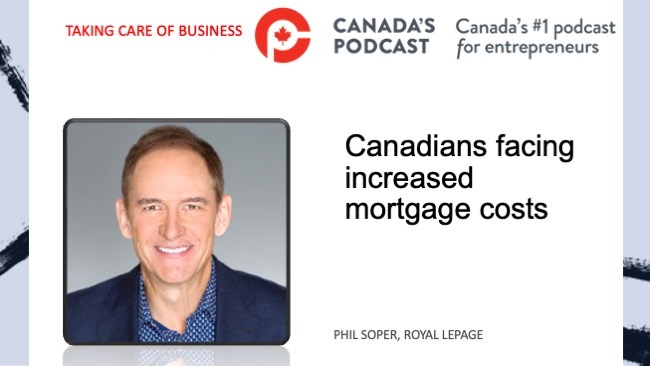The latest national accounts, by Statistics Canada, reveal that income and wealth disparities in Canada have widened in 2023, with the wealthiest benefiting the most from net property income gains, says a new report by TD Economics.
“Meanwhile, relative to 2019, middle-income families have become more indebted as their earnings have not kept pace with inflation. Key drivers of the pandemic economy, these families now face financial constraints that necessitate more conservative spending habits. As they revert to historical spending averages, their reduced participation in the economy is likely to slow aggregate consumer spending. On the other hand, the top 40% of the highest income earners who account for more than half of aggregate spending and possess greater liquid resources, will become a critical swing factor in determining the degree of economic resilience,” said the report.

August de Richelieu
“Statistics Canada’s latest data on the distributions of household economic accounts showed that the income gap has widened to levels not seen since 2015. The wealth gap has also expanded due to financial asset gains accruing predominantly to the wealthiest. The distribution matters for Canada’s bottom line. Consumer behavior is not uniform across income levels, and a change in income or wealth has a different impact on spending decisions in households of different incomes. Notably, the marginal propensity to consume out of income is lower at higher incomes. Conversely, for low-income households, a large share of income is already spent on necessities like food and shelter, so any income gains are more likely to be funneled directly into consumption.
“Therefore, this distributional detail can help shed light on the direction of saving-spending behavior in the near future. Furthermore, the most significant rate increases in several decades has had a unique impact on families across the income distribution.”
TD said national household net worth—total assets minus liabilities—increased by over $700 billion, or 4.5%, year-on-year to $16.4 trillion in 2023, rebounding from a decline of nearly 6.5% in 2022. And disposable income rose by 5.5%, in line with the previous year’s growth rate. However, the distributional accounts revealed that these gains were not evenly shared across the incomes, said the report.
“Income inequality worsened in 2023, with the largest disparity in disposable income shares between the highest and lowest income quintiles since 2015. Specifically, household income in the highest quintile averaged $197,909, up 6% from the previous year. In contrast, families in the bottom and second quintiles saw their incomes increase by only 0.3% to $31,518 and decrease by 0.3% to $59,178, respectively. Net property income was the most significant drag on average incomes across all but the highest income group, as rising interest payments overshadowed gains from investments,” it said.
“The net worth, or wealth, picture is somewhat brighter, as all families were, on average, better off in 2023, achieving wealth gains of 1.8-2.8%. Higher-income households benefited relatively more due to their larger holdings of financial assets, which were the main wealth drivers last year. However, real estate assets, which form a substantial portion of wealth for lower income quintiles, depreciated. This was exacerbated by a faster year-on-year increase in mortgage debt, used to finance these assets, compared to prior levels.
“Relative to pre-pandemic levels, an average household across the income distribution saw gains in both income and wealth. However, when compared to inflation, not all these gains kept pace. Notably, average personal disposable income for the second- and third-income quintiles were lower than the cumulative increase in CPI, suggesting that their real income is now lower, on average (Chart 2). However, relative gains in wealth were greater for lower income households, even when adjusted for inflation. This is especially true for gains in real estate wealth, where gains ranged from 29% for the highest income quintile to 56% for the lowest income quintile. Also, according to the Bank of Canada research, real estate is the major contributor to the wealth effect in Canada2. So, cumulative gains in this asset have likely supported consumer spending.”
Despite a sizeable deceleration, consumption across the income distribution remained relatively stable, growing within a very narrow range of 5.1-5.5% in 2024. This, however, was achieved by cutting back on discretionary items, such as furnishings & household equipment, recreation & culture, with lower income households cutting back the most. Meanwhile, inflation on necessities forced low- and middle-income households to rely on their savings to make ends meet. This will have direct implications on future spending as these families will have fewer liquid resources to tap into, added the report.
“What will keep the economy churning for now is spending by consumers at the upper end of the income distribution. They account for more than half of aggregate spending and may still have vestiges of pent-up demand in discretionary areas, as well as means to acquire these items,” said TD Economics.

Mario Toneguzzi
Mario Toneguzzi is Managing Editor of Canada’s Podcast. He has more than 40 years of experience as a daily newspaper writer, columnist, and editor. He was named in 2021 as one of the Top 10 Business Journalists in the World by PR News – the only Canadian to make the list. He was also named by RETHINK to its global list of Top Retail Experts 2024.
About Us
Canada’s Podcast is the number one podcast in Canada for entrepreneurs and business owners. Established in 2016, the podcast network has interviewed over 600 Canadian entrepreneurs from coast-to-coast.
With hosts in each province, entrepreneurs have a local and national format to tell their stories, talk about their journey and provide inspiration for anyone starting their entrepreneurial journey and well- established founders.
The commitment to a grass roots approach has built a loyal audience on all our social channels and YouTube – 500,000+ lifetime YouTube views, 200,000 + audio downloads, 35,000 + average monthly social impressions, 10,000 + engaged social followers and 35,000 newsletter subscribers. Canada’s Podcast is proud to provide a local, national and international presence for Canadian entrepreneurs to build their brand and tell their story





